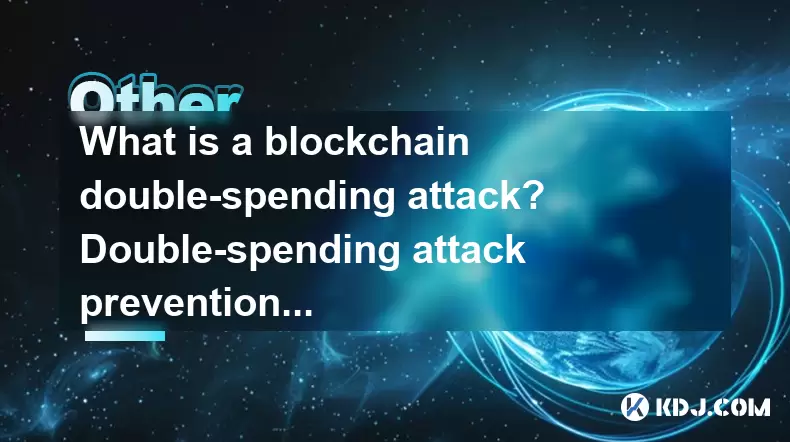-
 Bitcoin
Bitcoin $115200
-2.59% -
 Ethereum
Ethereum $3610
-4.80% -
 XRP
XRP $3.046
-1.70% -
 Tether USDt
Tether USDt $0.9997
-0.01% -
 BNB
BNB $762.6
-4.64% -
 Solana
Solana $168.7
-4.80% -
 USDC
USDC $0.9998
0.00% -
 Dogecoin
Dogecoin $0.2091
-4.05% -
 TRON
TRON $0.3270
-0.48% -
 Cardano
Cardano $0.7335
-3.72% -
 Hyperliquid
Hyperliquid $39.29
-10.55% -
 Stellar
Stellar $0.3999
-2.50% -
 Sui
Sui $3.542
-5.88% -
 Chainlink
Chainlink $16.62
-5.12% -
 Bitcoin Cash
Bitcoin Cash $551.5
-3.74% -
 Hedera
Hedera $0.2544
-3.06% -
 Avalanche
Avalanche $22.11
-4.29% -
 Ethena USDe
Ethena USDe $1.001
0.00% -
 Toncoin
Toncoin $3.523
-1.18% -
 UNUS SED LEO
UNUS SED LEO $8.939
-0.13% -
 Litecoin
Litecoin $106.3
-2.77% -
 Shiba Inu
Shiba Inu $0.00001235
-3.83% -
 Polkadot
Polkadot $3.647
-3.93% -
 Uniswap
Uniswap $9.071
-6.41% -
 Monero
Monero $301.6
-0.77% -
 Dai
Dai $0.0000
-0.01% -
 Bitget Token
Bitget Token $4.331
-3.46% -
 Pepe
Pepe $0.00001064
-5.31% -
 Cronos
Cronos $0.1367
-5.05% -
 Aave
Aave $259.2
-3.66%
What is a blockchain double-spending attack? Double-spending attack prevention measures
A blockchain double-spending attack occurs when someone tries to spend the same cryptocurrency twice by manipulating transaction confirmations.
Jun 14, 2025 at 03:49 pm

Understanding Blockchain Double-Spending Attacks
A blockchain double-spending attack occurs when a malicious actor attempts to spend the same cryptocurrency twice. This type of attack exploits the decentralized and trustless nature of blockchain networks, where transactions are verified by consensus rather than a centralized authority. In a typical scenario, an attacker sends a transaction to a merchant or service provider and then creates a conflicting transaction that redirects the same funds to another wallet controlled by the attacker.
The success of such an attack depends on whether the attacker can manipulate the blockchain to confirm their fraudulent transaction while invalidating the legitimate one. Although most modern blockchains have robust mechanisms in place to prevent this, certain conditions—such as low network hash rate or short confirmation times—can make double-spending attacks more feasible.
Double-spending is not just a theoretical threat—it has real-world implications for users and businesses operating within the crypto ecosystem.
How Does a Double-Spending Attack Work?
In a standard blockchain transaction, once a transfer of digital assets is confirmed by miners or validators, it becomes immutable. However, attackers may try to reverse this process through various methods:
- The attacker initiates a transaction (e.g., purchasing goods) and simultaneously prepares a conflicting transaction.
- If the recipient accepts the first transaction without sufficient confirmations, the attacker attempts to rewrite the blockchain history using computing power or collusion.
- By controlling a majority of the network’s hashing power (in Proof-of-Work systems), the attacker can mine blocks faster than the rest of the network, effectively overwriting the valid chain with a fraudulent one.
This method is commonly referred to as a 51% attack, which we’ll explore in greater detail later.
Understanding the mechanics behind these attacks helps users and developers better secure their transactions and infrastructure.
Types of Double-Spending Attacks
There are several variations of double-spending attacks, each exploiting different aspects of blockchain technology:
- Race Attack: The attacker broadcasts two conflicting transactions almost simultaneously. One goes to the merchant, and the other to themselves. Whichever gets confirmed first determines the outcome.
- Finney Attack: Named after Hal Finney, this involves pre-mining a block containing a fraudulent transaction. Once the legitimate transaction is accepted, the attacker releases the pre-mined block, invalidating the original.
- Vector76 Attack: A combination of race and Finney attacks, where the attacker uses a direct connection to the recipient and bypasses the broader network to gain an advantage.
- 51% Attack: As previously mentioned, this involves gaining control of more than half of the network's mining power to manipulate transaction confirmations.
Each of these types presents unique challenges depending on the blockchain architecture and consensus mechanism in use.
Recognizing the specific type of attack being used is crucial for implementing effective countermeasures.
Preventing Double-Spending Attacks
To mitigate the risk of double-spending, blockchain networks and users must adopt multiple layers of defense:
- Wait for Multiple Confirmations: Most platforms recommend waiting for at least six confirmations before accepting a transaction as final. Each confirmation represents a new block added on top of the transaction block, increasing security exponentially.
- Use Trusted Nodes: Receiving payments through trusted full nodes rather than lightweight wallets reduces exposure to malicious transactions.
- Monitor Network Health: Tracking metrics like hash rate, number of active nodes, and orphaned blocks helps detect anomalies that might indicate an ongoing attack.
- Implement Smart Contracts Safeguards: On programmable blockchains like Ethereum, smart contracts can include logic to delay fund transfers until sufficient confirmations are met.
- Utilize Off-chain Solutions: Payment channels and layer-2 protocols like the Lightning Network reduce reliance on on-chain confirmations for small-value transactions.
These strategies help create a resilient environment where double-spending becomes increasingly difficult and costly for attackers.
Proactive prevention is always better than reactive recovery when dealing with irreversible blockchain transactions.
Role of Consensus Mechanisms in Preventing Double-Spending
The underlying consensus algorithm plays a critical role in securing the network against double-spending:
- Proof-of-Work (PoW): Requires significant computational effort to add new blocks, making it expensive for attackers to overpower the network.
- Proof-of-Stake (PoS): Validators are chosen based on the amount of cryptocurrency they stake, discouraging dishonest behavior due to financial risk.
- Delegated Proof-of-Stake (DPoS): Relies on elected delegates to validate transactions, offering faster confirmations but potentially centralizing control.
- Byzantine Fault Tolerance (BFT): Used in permissioned or hybrid blockchains, BFT ensures agreement even if some nodes behave maliciously.
Choosing the right consensus model depends on the trade-offs between decentralization, scalability, and security.
Strong consensus mechanisms serve as the first line of defense against transaction manipulation.
Frequently Asked Questions
Q: Can double-spending occur on Bitcoin?
Yes, although highly unlikely under normal conditions. Bitcoin’s large hash rate makes 51% attacks impractical for major exchanges and services. However, smaller altcoins with less mining activity are more vulnerable.
Q: How many confirmations are safe for BTC transactions?
Most platforms consider six confirmations sufficient for high-value transactions. For lower-risk scenarios, one or two may be acceptable, though this increases vulnerability to race-style attacks.
Q: Is there a way to detect a double-spend attempt in real-time?
Blockchain explorers and node software can flag conflicting transactions, especially if both are broadcast simultaneously. Monitoring tools can alert merchants or recipients when duplicate inputs appear.
Q: Are hardware wallets immune to double-spending?
No, hardware wallets store private keys securely but cannot prevent double-spending attempts on the network level. They only ensure that the user’s funds are not stolen directly from the wallet interface.
Disclaimer:info@kdj.com
The information provided is not trading advice. kdj.com does not assume any responsibility for any investments made based on the information provided in this article. Cryptocurrencies are highly volatile and it is highly recommended that you invest with caution after thorough research!
If you believe that the content used on this website infringes your copyright, please contact us immediately (info@kdj.com) and we will delete it promptly.
- SPX6900, BlockDAG, and Miner Sales: A New York Minute on Crypto Trends
- 2025-08-01 23:30:15
- BlackRock, XRP ETF, and Ripple: Is the Perfect Storm Brewing?
- 2025-08-01 22:50:11
- Dogecoin's Bullish Engulfing Pattern: Is a Major Price Move Imminent?
- 2025-08-01 22:30:12
- Score Big with bet365 Bonus Code BOOKIES: Your Ticket to NFL, MLB, and WNBA Action!
- 2025-08-01 22:30:12
- SportsMillions Promo Code & Bonus: Your Ticket to Social Sports Action
- 2025-08-01 22:50:11
- BetMGM Bonus Code BOOKIES: Your Ticket to NFL, MLB & WNBA Action (and More!)
- 2025-08-01 22:55:54
Related knowledge

What is the difference between a blockchain and a database?
Aug 01,2025 at 09:36pm
Understanding the Core Structure of a BlockchainA blockchain is a decentralized digital ledger that records data in a series of immutable blocks linke...

How to start a business using blockchain?
Jul 28,2025 at 12:36am
Understanding the Basics of Blockchain TechnologyBefore diving into the process of starting a business using blockchain, it's crucial to understand wh...

What is a token on the blockchain?
Jul 21,2025 at 07:00am
Understanding the Concept of a TokenIn the realm of blockchain technology, a token is a digital representation of an asset or utility that exists on a...

Can blockchain be used for identity verification?
Jul 18,2025 at 02:14pm
Understanding Identity Verification in the Digital AgeIn the modern digital landscape, identity verification has become a critical component for ensur...

What is a consensus mechanism in blockchain?
Jul 21,2025 at 03:01am
Understanding the Basics of Consensus MechanismsA consensus mechanism is a critical component of any blockchain network. It refers to the process by w...

How to explain blockchain to someone with no tech background?
Jul 18,2025 at 11:08pm
Understanding the Basics of BlockchainTo explain blockchain to someone with no tech background, it's essential to start with simple analogies and avoi...

What is the difference between a blockchain and a database?
Aug 01,2025 at 09:36pm
Understanding the Core Structure of a BlockchainA blockchain is a decentralized digital ledger that records data in a series of immutable blocks linke...

How to start a business using blockchain?
Jul 28,2025 at 12:36am
Understanding the Basics of Blockchain TechnologyBefore diving into the process of starting a business using blockchain, it's crucial to understand wh...

What is a token on the blockchain?
Jul 21,2025 at 07:00am
Understanding the Concept of a TokenIn the realm of blockchain technology, a token is a digital representation of an asset or utility that exists on a...

Can blockchain be used for identity verification?
Jul 18,2025 at 02:14pm
Understanding Identity Verification in the Digital AgeIn the modern digital landscape, identity verification has become a critical component for ensur...

What is a consensus mechanism in blockchain?
Jul 21,2025 at 03:01am
Understanding the Basics of Consensus MechanismsA consensus mechanism is a critical component of any blockchain network. It refers to the process by w...

How to explain blockchain to someone with no tech background?
Jul 18,2025 at 11:08pm
Understanding the Basics of BlockchainTo explain blockchain to someone with no tech background, it's essential to start with simple analogies and avoi...
See all articles

























































































